Here are some tips on how to choose a western bit suitable for your horse:
- Western horses are ridden in both snaffle bits and curb bits. Snaffle bits work via direct pressure while curb bits employ leverage.
- Young or green horses are typically started in a snaffle bit and should learn the basics in a simple snaffle before graduating to the refinement of a curb bit.
- Because every horse’s mouth is sized and shaped differently, a mouthpiece that is comfortable for one horse may not be the best choice for another. Take mouthpiece design into consideration when choosing a bit.
- Contrary to popular belief, a jointed curb (such as a Tom Thumb) is not necessarily a mild bit because of the dual pressure from the jointed mouthpiece and the leverage.
We’ve all been there, happily chatting on our cell phone while the person on the other end of the line only hears static and the second syllable of every third word. We converse with our horses with simpler, more direct methods—which include reins and bits—but there is always the possibility that the lines of communication will become garbled.
A Compatible Communication Device
A western bit that you choose has to have the horse accept willingly which improves the quality of your conversation. This is because your cues will be perceived with understanding and confidence. If a bit causes pain or damages the sensitive tissues of your horse’s mouth, immediately reclassify it as a decorative wall hanging.
A suitable western bit that you choose should also be compatible with your horse’s level of training. A young horse that is just learning the ropes under saddle is not ready for the complexities of a leverage bit until he’s learned the basics in a snaffle.
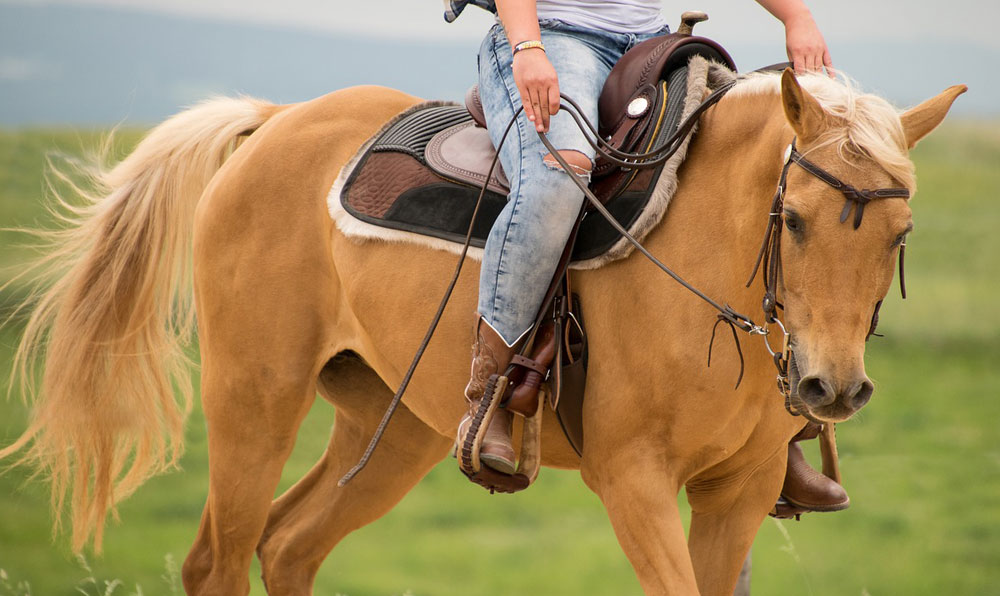
Also consider your own riding skills when you are bit shopping. For example, if you tend to have busy or heavy hands, a milder bit (such as a snaffle) will lessen the chance that your horse will be confused by unintentional cues.
Snaffle Bits
The first type of western bit that a horse owner can choose is a snaffle bit. A snaffle is defined as any bit that works through direct pressure, as opposed to curb bits, which work via leverage. The snaffle is perfect for introducing young horses to the fundamentals, but it can be used on any horse that would benefit from direct rein contact. It is often constructed with two bit rings connected by a solid, single or double-jointed mouthpiece.
The rings of the bit may be round and slide loosely or fixed as in the variations of the “D” or eggbutt style. The snaffle design can isolate rein pressure on one side of the mouth. That feature makes it a popular bit for developing lateral flexibility. It’s also useful for teaching a horse to accept rein contact and travel in a round and balanced frame.
Curb Bits
The second type of western bit that a horse owner can choose is a curb bit. As a western horse’s training progresses, he’ll need less support from the rider’s hands and will be ridden on a longer rein. The action of the curb bit makes it easier for a horse to perceive subtler rein cues.
A curb bit is defined as any bit on which the reins attach below the level of the mouthpiece. The reins attach to the ends of shanks, which are usually 2 to 71/2 inches in length, but can be longer. The shanks may be loose or fixed where they join the cannons of the mouthpiece (the cannons rest on the bar of the horse’s mouth).
A loose-jawed bit allows more lateral control and has a softer feel. A solid-shanked bit has little or no flexibility depending on the construction of the mouthpiece, and tends to twist if a rein is used independently; however, it works well on a horse that needs less lateral action from the bit and more stability to maintain proper balance and alignment through the body.
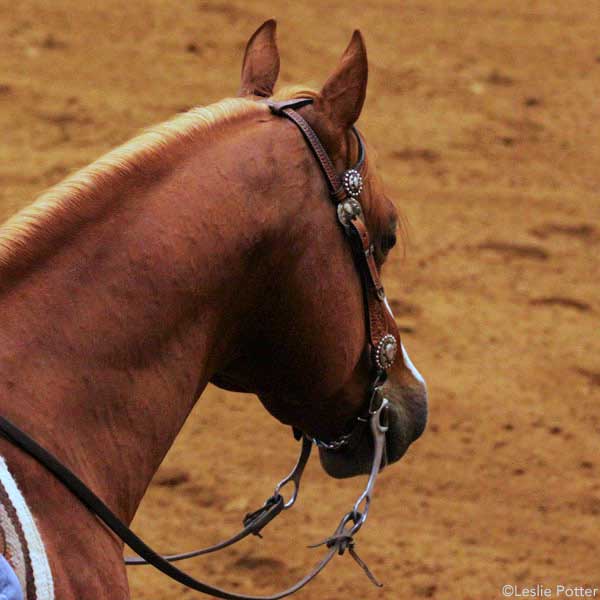
Shanks produce a leverage effect, which amplifies rein pressure. The difference in length between the shank and the purchase (section that rises above the mouthpiece) determines how much force is created. It can be measured by comparing the lengths of the shank and the purchase. For example, if a shank is 3 inches long and the purchase is 1 inch, the ratio is 3 to 1. The horse will feel 3 pounds of force for each pound applied by the rider.
The shape of the shank affects how fast the bit is engaged when the rider picks up on the reins. A straighter shank will activate the bit more quickly than a shank that is curved.
A curb bit stimulates other pressure points as well. As the shanks are drawn back, the curb strap or chain presses against the sensitive nerves of the lower jaw. To adjust a curb strap or chain correctly, a general rule of thumb is to make it loose enough to slip two fingers between it and the jaw. That allows the mouthpiece time to engage before the curb strap tightens.
The curb strap also prevents the shanks from being pulled back too far and over-rotating the mouthpiece. Depending on the height of the purchase, the horse may also feel downward pressure from the crownpiece of the bridle, encouraging a lower head and neck position.
When the shanks of a curb bit are drawn back, the mouthpiece is rotated downward against the bars and tongue. Some bits are designed to put more pressure on the bars while avoiding contact with the sensitive tongue, while others press against both the bars and the tongue. A bit with a high port will also apply pressure to the palate.
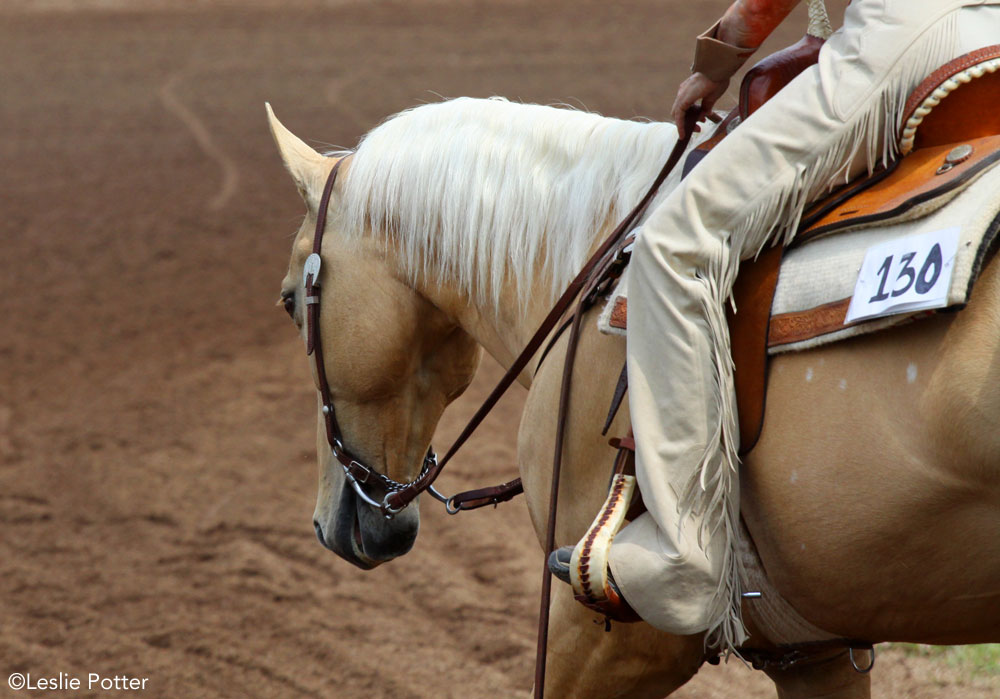
The shape of each horse’s mouth is unique, so try different bit types to find one your horse likes (see “The Right Bit?” below). Some horses work well with tongue contact, yet others have a sensitive tongue and are more comfortable with a bit that offers plenty of tongue release. A mouthpiece with a broad raised port or link reduces tongue pressure. This is a great design for horses that are nervous about tongue pressure or have tongue damage.
A curb bit may have a solid, single or multi-jointed mouthpiece with no port, a low port, a high port or something in the middle. A bit without a port will put pressure on the tongue as it rolls down across the lower jaw. If the port is tall and narrow, it will involve the tongue, bars and palate, offering the horse little relief. Such a bit is best suited for a horse that needs only the occasional reminder to carry himself in the correct frame by a skilled rider with a delicate touch.
A hinged mouthpiece coupled with a high port intensifies the effect by collapsing over the sensitive bars while pressing against the roof of the mouth. A wider port or flattened spoon-shaped port will distribute the force more evenly and be kinder to the horse.
Bit Fit
It is important that the bit fits correctly when choosing a western bit for your horse. A snaffle bit should be adjusted so that it rests snugly against the corners of the mouth without creating a full wrinkle. Since a snaffle is lightweight, this adjustment allows the horse to pick up the bit and hold it comfortably in his mouth. It also prevents the bit from putting constant pressure on the lips, so the horse can feel a distinct release when the reins are loosened.
When using a snaffle with a western headstall, always use a leather or nylon curb strap to prevent the bit from sliding through the horse’s mouth.
A curb bit is heavier and can bang around in a horse’s mouth if it’s too low. It should be set with one full wrinkle. The width of the bit is correct when the rings or shanks come into contact with the corners of the lips without pressing inward against the skin. A bit that is too narrow uncomfortably presses the lips against the horse’s teeth. If the bit is wider than the mouth, it will slide around and irritate the horse.
The Kindest Choice?
Contrary to popular belief, a broken-mouthed curb bit, such as a Tom Thumb, or a bit mistakenly referred to as a western snaffle, is not necessarily the kindest choice to make, especially when combined with the leverage action of a curb. The jointed pieces collapse together as rein contact is applied, effectively crushing the bars and tongue between them.
“Even a simple snaffle bit can be harsh if the mouthpiece is too straight and unyielding. If your horse is particularly sensitive, try a softer three-piece snaffle or a snaffle with a link that prevents the cannons from completely closing together.”
To take some of the bite out of a broken-mouthed bit, make sure that the cannons are curved and slightly tapered toward the center instead of straight. A curved mouthpiece accommodates the tongue and allows the horse to swallow without restriction, encouraging a softer mouth.
Even a simple snaffle bit can be harsh if the mouthpiece is too straight and unyielding. If your horse is particularly sensitive, try a softer three-piece snaffle or a snaffle with a link that prevents the cannons from completely closing together. The width of the cannons affects the severity of a bit as well. Although a thicker mouthpiece distributes more pressure over a wider area, horses with thick tongues or shallow mouths often prefer a bit with slightly thinner cannons. No matter the diameter, the cannons should be smooth and fit the shape of the mouth for a comfortable fit.
Metal Mouth
Another factor that is important to think about when choosing a western bit for your horse is the type fo metal that is used. The type of metal used to form the mouthpiece has an impact on how well a horse accepts it.
- Bits that are made of iron, also referred to as sweet iron, have a pleasant taste that increases their palatability. Another benefit of iron is that it naturally oxidizes and encourages salivation. A moist mouth lubricates the bars and tongue so that the bit slides easily across the delicate tissue. A horse with a wet mouth also tends to be more receptive to rein contact.
- Cyprium is an alloy made of bronze and copper. It’s durable and promotes salivation without losing its luster.
- Stainless steel is strong and retains its appearance, but is tasteless and creates a dry mouth. If you choose a stainless steel bit, make sure it has a copper roller or inlaid copper on the cannons or the link. A copper roller can also soothe a horse with a busy tongue.
Once you’ve chosen a western bit that seems suitable for your horse, scrutinize its overall condition. Watch out for sharp or rough edges, or gaps between moving parts that will pinch delicate skin. Run your fingers over all the joints connecting shanks, cannons and links to make sure that the parts fit together smoothly.
The Bit Test
You can get a good idea of how a bit works by trying it on yourself. No, you don’t have to wear it around the tack store. You can lay the western bit in the palm of your hand and close your fingers to simulate how it will feel inside your horse’s mouth. Then tug on the rings or the shanks of the bit, mimicking a pull on the reins. If it’s a curb bit, try it with a curb strap attached.
Hold the mouthpiece in your hand with the curb strap under your wrist so that you can feel the leverage effect. Pull on the shanks evenly and independently. Notice the difference between loose and fixed-jaw bits and how the various shapes and configurations of cannons and links create pressure. If any bit pinches or causes discomfort when it’s held in your hand, imagine what it will do inside your horse’s tender mouth.
Your horse should be relaxed and accepting of a new bit within the first or second ride. If he shows signs of resistance, find him something more suitable.
The Right Bit?
If your horse:
- Travels in a round and balanced frame.
- Has a mouth that is quiet and remains closed when he feels pressure.
- Consistently carries his head on the vertical, at a 90 degree angle to the ground.
- Remains relaxed and willing when you apply rein contact.
Then the answer is yes! Your horse likes his bit.
If your horse:
- Travels in a rigid frame with the head and neck elevated.
- Opens his mouth or sticks his tongue out or over the bit in response to pressure.
- Carries his head above or behind the vertical.
- Becomes tense or frightened when rein contact is applied.
Then the answer is no, and your horse needs a different bit. Nothing influences the effectiveness and severity of a bit more than a rider’s hands. Even the most innocuous piece of equipment can damage a horse’s mouth, and psyche, if used carelessly. If your horse is fighting the bit you are currently using, resist the urge to try one that is harsher. At best, it will intimidate your horse into a false and temporary state of submission. At worst, it will create pain and fear, causing more problems than it can solve.
There is a staggering assortment of western bits available to choose from for your horse on the market. Some are good, others bad, and there are those that are just downright ugly and should never find their way into a horse’s mouth. Your horse deserves to feel comfortable and confident when he’s being ridden. A decent bit isn’t going to be cheap, but this is not an area where it’s wise to cut corners. Consider the bit you purchase as an investment in a good communication tool and your horse’s happiness.
Liked this article? Here are others you’ll enjoy:
Horse Illustrated’s Online Bit Guide
Graduating Your Horse from Snaffle to Curb
This article first appeared in the February 2004 issue of Horse Illustrated magazine. Click Here to subscribe.


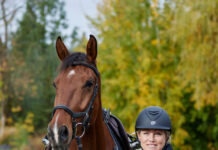

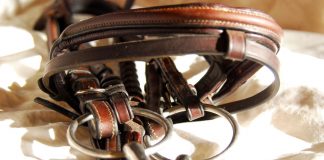

Your article was very informative. Thanks for sharing your knowledge with us.
Very good!Thanks!
helpful
Another one of those articles, it pays to reread a few times.
Goodness, that is a well written article and I agree, worth rereading.
Very helpful article. Article made it easier to understand.
Great Article! Thanks very much for posting this information.
This is a subject, I want to learn more about. Thank you very much.
Interesting.
Loved this article. Very informative and on a subject more people need to be educated about.